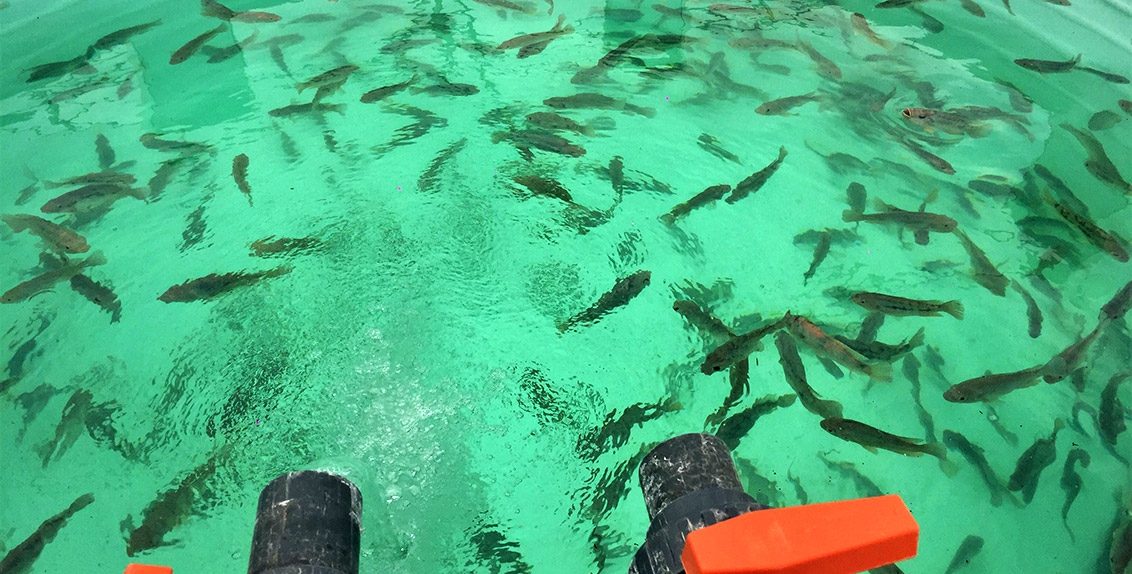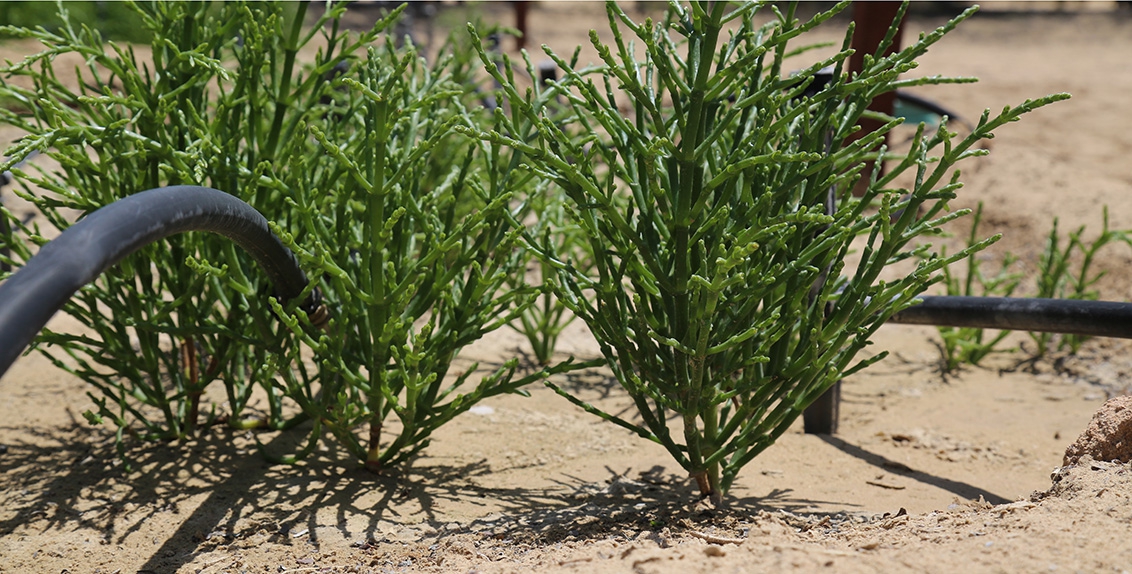Recycling Reject Brine
Brine Disposal
Brine is an extremely salty solution, and is a product of desalination, or the purification of seawater. After desalination, brine’s uses are plentiful. Desalination plants such as the Diablo Canyon Nuclear Plant in California uses Reverse Osmosis to desalinate seawater. Reverse Osmosis is the process in which a membrane is used to filter fresh water out from water of less pure solution, by use of pressure. The brine created from desalination is then filtered through energy recovery devices (ERD’s) so that the pressure can be maintained. This saves energy and money, because the brine acts as the hydraulic pressure for reverse osmosis to occur. However, after this the brine is pumped into the ocean. Instead of simply pumping brine out into the ocean, the desalination plant in Sydney Australia uses a brine diffuser system. This system releases brine at a high velocity in a variety of areas, and is proven to have minimal impact on fish and coral life. However brine that is disposed of into the ocean still causes further pollution if not careful and also uses energy and money.
A possible use of reject brine is injecting brine into the aquifer that it originated from. Based on CO2 sequestration operations, the general hypothesis is that the dense brine will flow into salty aquifers, and therefore be disposed of. However, the issue with this method is its cost. Due to drilling, casing, cementing costs, and equipment costs make the process extremely expensive. The costs for a 66 mm diameter by 407 meter deep hole in the Chowilla Floodplain cost around $420 per meter. The necessary equipment are required to inject brine. The equipment would have an estimated cost of around $19,000 U.S dollars per aquifer. However, the trade-off for this method is that once established, brine can be constantly pumped into these aquifers, meaning its scale at which it disposes brine is greater than compared to other methods.

Through recent experiments, a better alternative has been found than simply disposing of brine in the sea. It was discovered that brackish brine can help agricultural areas recently affected by drought. Seawater brine can positively affect wetlands that have been affected by drought. Areas with an algae population can also utilize brine to grow, an example of which being the scenedesmus algae (a variation of green algae), which could handle salinity levels of 40000-80000 mg/L. Furthermore, brine can help plants such as beetroot, sugar cane, cotton, dates, barely, spinach, asparagus and wheat can be grown by using reject brine from desalination. Fish species that can survive salt conditions are able to utilize brine to grow, and some grasses such as the Paspalum (Dallis grass) can be irrigated with high salinity water.

Electrodialysis of Brine
Electrodialysis or ED, is a process where aqueous ions are separated through ion permeable membranes, by an electrical potential gradient. In the case of brine, the anion and cation node are used to attract and separate sodium hydroxide and hydrochloric acid from brine.

The production of sodium hydroxide from electrodialysis is especially prevalent when considering that when it is normally produced, a by-product is chlorine gas. However, in the case of electrodialysis, this is not the case. Since chlorine gas is harmful to the environment, it is a more environmentally friendly way to produce sodium hydroxide through ED. Sodium hydroxide is useful to help clean the membranes used in reverse osmosis. Hydrochloric acid on the other hand, can be used to clean desalination facilities.Hydrogen gas is also produced from the product of electrodialysis, and can be contained via a ventilation system. However, this does not mean that the process of electrodialysis is perfect. Electrodialysis must occur multiple times before the compounds are fully separated from the brine. It also is not completely reliant on electrical energy, and leaves a carbon footprint. The process can also be expensive for the amount of chemicals produced.
Another process very similar to, but more effective than electrodialysis is Electrolysis reversal, or EDR. Instead of a positive and negative charge being used to separate ions, EDR reverses the voltage 3-4 times a hour. This process has a 97% water recovery rate, and can produce gypsum, calcium sulfate and barium sulfate. Gypsum can be used as a soil additive, calcium sulfate can be used as a soil conditioner and barium sulfate can be used in soil pH tests. EDR still has some of the same shortcomings as ED, because it leaves behind a carbon footprint and is expensive for the relative amount of produced chemicals.
An offspring of ED, Bipolar membrane electrodialysis (BMED) is used to convert solutions into acid and bases. The process splits a salt solution into an acid and a base with low voltage and no byproduct. In brine solutions, acids and bases created from BMED are hydrochloric acid and sodium hydroxide.

Chemical Precipitation
Chemical precipitation is the process of adding ions into a diluted solution in order to extract certain ions in the solution. In an experiment, seawater from the Mediterranean and Red Sea acted as the diluted solution. Sodium phosphate and sodium carbonate were ions added to brine.

The most abundant ions removed from this experiment were magnesium and calcium. In the case of magnesium, 47% was extracted from seawater, and 24% was extracted from the brine solution. 98% of calcium salts were extracted from seawater and 75% of calcium salts were extracted from brine solution. Note that to be considered as drinking water, not all minerals and salts have to be removed. Electrodialysis can be applied to further separate the brine solution. Afterward, the solution can go through chemical precipitation, to further isolate salts.
A variation on the chemical perspiration experiment was conducted, with hydrochloric acid as an ion being added to the brine solution. In this experiment, seawater was not used, because the acid would pollute it. The experiment procedure is as follows: the brine solution is treated with electrodialysis, then chemical precipitation with HCL, and the removal rate for ions was measured. The most abundant ions that precipitated were calcium and magnesium. The removal rate was always above 95% for both ions.
Sorbents
A sorbent is a property that substances have where they can absorb other substances. The use of sorbents can lead to the extraction of metals from brine, examples being cesium, rubidium and uranium. After research, it was found that a hexacyanoferrate-based extracting medium also known as CsTreat, was the best for sorption of cesium and rubidium. Cesium and rubidium are metals that are used in vacuum tubes. CsTreat can extract Uranium (IV), or by phosphonic (ZrP) and sulfonic-based resin (S910) sorbents. Uranium (IV) is useful for nuclear energy sources. These extractions cost less than other processes such as electrodialysis. However, the flaw with using sorbents is that there are far too many steps in the process. This coupled with its small scale means that it will take time before it is ready to be industrial ready.
Solar Ponds
Salinity gradient solar ponds are created to store solar energy. The ponds are natural or artificial tanks of water that store solar energy. The pond has three layers, the Upper Connective Zone (UCZ), the Non-Convective Zone (NCZ) and the Lower Connective Zone (LCZ). The UCZ is a layer of fresh water, and is the only layer where the temperature is homogeneous. The NCZ is a layer with brine concentration, increasing with the density, and keeps stored heat from being released. The LCZ is where the energy from the pond is stored, due to the homogeneous layer of brine salinity. From the LCZ, heat is extracted, and used as energy. The process occurs via a Photovoltaic Thermal Collector (PV/T), which is connected to a heat exchanger, which converts the heat stored in the LCZ to energy. The energy produced from the PV/T can be varied, from thermal energy for heats, to electrical energy that powers car motors. For the creation of solar ponds in areas without high brine concentrations, reject brine can be used to create the LCZ and UCZ layers, by mixing water with a certain concentration of brine depending on the layer. The solar ponds can vary in size, but their energy output is considerable, but the limitations of solar energy still limit its output to be a completely sustainable source of energy. There is a limitation in the concentration of brine, because for the LCZ and NCZ levels, the brine must reach a certain concentration. This means only specific concentrations of brine can be used. However, if treated, theoretically any brine could meet the criteria to be used in a solar pond.

Fermentation
Brine, with its high salinity, can be used as a preservative and facilitate fermentation for
vegetables such as cucumbers. This process of using brine as a preservative is relatively
easy. First, brine must cover the vegetable, then another salt (or vinegar) is added to
maintain the original concentration of salinity. This allows the vegetable to ferment,
releasing acids and alcohols. For most vegetables, around 5% of the total solution required
brine.
Brine is used for the fermentation of yeast. The concentration salt during the fermentation
of yeast is around 5-23% salts. Likewise, when using brine for fermentation, the smaller
concentrations of brine were fermented more rapidly compared to high concentrations of
brine. However, research shows that once fermentation occurs, the concentration of brine
has no noticeable effect on its rate. After 10 months of storage, cucumbers, green peas and
leafy vegetables were found to be relatively normal in color, flavor and texture.
Coolants
Brine has a relatively high melting and boiling point, and thus can be used as a coolant. In a
research study on cooling on low carbon steel, brine was found to improve the tensile
strength of low carbon steel by 46%. This is especially significant because water imported
the tensile strength by 41%. This discovery is significant because it reduced the amount of
water needed for cooling metals, while also utilizing reject brine.
Evaporation
Reject brine can be utilized for evaporation methods. In recent years, scientists have
developed a method to utilize natural sunlight to purify water. The numerous hydrophilic
groups in brine such as hydroxide, nitrite and hydrogen sulfite can interact with water
through hydrogen bonds. By dehydrating the hydrophilic groups, the water hydrates these
groups, creating an osmotic pressure. This opens up many uses from the brine. In forward
osmosis, the pressure difference can be used to draw out the water, which saves money
and energy costs. The solar radiation causes the ions to enter the reject brine, allowing the
hydrophilic groups to be hydrated. This allows purified water to be released in the form of
condensation, which can then be captured and used as clean water. The process is
environmentally friendly, and has low operational costs. However, the problem with using
reject brine to facilitate evaporation experiments is that high concentrations of brine
cannot be purified. Even when tested over long periods of time (around 12 hours), large
amounts of hydrophilic groups remained, and only a small amount of water was purified.

Experiments were also carried out with wood applied as the main evaporator, but this trial
did not yield worthwhile results. Scientists utilized the capillary force that wood has in
order to push water up its xylem, and eventually release water vapor through
photosynthesis. In the first quiz wood’s internal structure was thinner than the salts and
hydrophilic groups, which clogged the insides of the wood. However, upon changing the
wood to balsa wood, the experiment yielded results. Without any salt accumulation in the
insides of the wood, it could purify water at a rate of 1.7 kilograms per meter squared, with
15% salt concentration over a period of 20 days. Furthermore, when holes were drilled into
the wood, the evaporation rate of water vapor was increased. However, the rate at which
evaporation takes is a limiting quality to this method. This method also requires space and
trees, because to produce more water vapor, it is necessary to have a large number of
trees and space.
Agriculture
Reject brine has demonstrated agricultural uses. Reject brine pools can be used for fish farming. Many fish like Tilapia have a high tolerance for salinity stress.


Brine is known to be a contaminant when carelessly dumped into the ground. Innovative studies in the United Arab Emirates have successfully used brine for modular farming in arid desert environments to grow halophytes, crops with high saline tolerance.
The water crisis creates a food crisis. The lack of clean water creates a dearth not only for drinking supplies but for irrigation. The innovative use of desalination to create more water can destress the food crisis and the direct use of brine for agriculture can directly address it.
